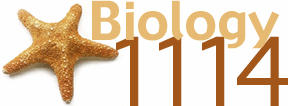 |
Concept
Maps
|
Why should I use a concept map?
Everyone "learns" material
in a variety of ways. Many people learn most effectively by visually organizing
material, and concept maps are simply one method of organizing this material.
You might find them to be very helpful. Concept maps are similar to outlines,
in that they often 'begin' with a main idea or concept, and then divide into
subtopics. However, concept maps are especially useful because they can show
the relationships that exist between concepts! (Studies show that learning occurs
only when the brain can relate one piece of information to another piece of
informationů)
How do I use a concept map -
they're so confusing!
At first glance, existing concept
maps can appear completely overwhelming! Therefore, to use a concept map, always
begin by looking for the central theme(s). Then, focus on a particular theme,
and study the subtopic(s) that branch out from this theme. It might help you
to ask these questions:
- How do the subtopics
relate to each other?
- Why are they subtopic(s)
of this theme?
- How do these subtopic(s)
relate to other themes?
Recognizing the relationship(s) between
the concepts should help you understand the concepts better!
How can I create my own concept
map?
The existing Biology 1114 concept
maps show a particular way of relating the material. You, however, might find
it much more beneficial to create your own concept map(s), describing the relationships
that you see between the material. Concept maps can be developed in a
variety of ways -- remember, each concept map is designed to help you
learn the material most effectively. If you learn best by following a particular
structure, then you should design your concept map(s) to reflect that structure!
* The Biology 1114 concept maps were formatted using InspirationÒ software,
which is available on the computers in the Learning Resources Center.

